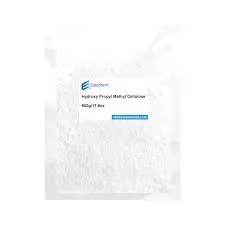
Nov . 27, 2024 11:54 Back to list
HPMC Applications and Benefits in Modern Construction Techniques and Materials
The Importance of HPMC in Construction Enhancing Material Performance and Sustainability
Hydroxypropyl Methylcellulose (HPMC) is a widely used additive in the construction industry, known for its multifunctional properties that improve both the performance and durability of construction materials. This cellulose ether, derived from natural cellulose, has gained popularity for its versatility in applications such as mortar, plaster, and tile adhesives. Understanding the role of HPMC in construction can lead to enhanced material performance, greater sustainability, and improved workability, thereby benefiting both builders and end-users.
Enhancing Workability and Flow
One of the primary advantages of incorporating HPMC into construction materials is its ability to enhance workability. When added to mortars and plasters, HPMC increases water retention, allowing for better flow and making these materials easier to apply. This improved workability translates to more efficient installation processes, reducing labor costs and time on the job site. Additionally, the enhanced flow characteristics ensure that the materials can reach complex areas, resulting in a smoother finish and more aesthetically pleasing outcomes.
Water Retention and Strength Development
Water retention is crucial in construction as it directly affects the hydration of cement and the curing process. HPMC plays a vital role in moderating the evaporation of water, which can otherwise lead to incomplete curing and ultimately compromise the strength of the material. By maintaining adequate moisture levels, HPMC contributes to the development of compressive strength and durability in mortars and adhesives. This is particularly important in areas with hot and dry climates, where rapid evaporation can negatively impact the performance of the construction materials.
hpmc for construction

Improved Adhesion and Bonding
HPMC also enhances the adhesion properties of construction materials. In tile adhesives, for example, the presence of HPMC improves the bond strength between the tile and the substrate, ensuring long-lasting performance. This characteristic is especially beneficial in areas subjected to moisture or thermal expansion, where the risk of delamination is higher. The increased bond strength provided by HPMC helps to mitigate potential failures, reducing maintenance costs and prolonging the life of the installation.
Environmentally Friendly and Sustainable Building Practices
As the construction industry moves toward more sustainable practices, the use of HPMC aligns with this shift. Being derived from natural cellulose, HPMC is considered a more environmentally friendly alternative to synthetic additives. Furthermore, its ability to enhance the performance of construction materials can contribute to energy efficiency by improving insulation properties and reducing the need for frequent repairs. By incorporating HPMC, builders can create more sustainable structures that are better equipped to withstand environmental stresses.
Conclusion
In summary, the inclusion of Hydroxypropyl Methylcellulose (HPMC) in construction materials is a game changer for the industry. Its multifaceted benefits—including improved workability, enhanced water retention, superior adhesion, and alignment with sustainable building practices—make it an invaluable additive. As the demand for high-performance and environmentally friendly construction solutions continues to grow, HPMC will undoubtedly play a crucial role in shaping the future of construction. Embracing this versatile additive can lead to better building practices, ultimately creating structures that are not only durable but also responsible towards our environment. As the construction landscape evolves, innovative materials like HPMC will be at the forefront, driving advancements in quality and sustainability within the industry.
-
HPMC for Tile Adhesive: Superior Bonding & Workability
NewsAug.30,2025
-
Premium Cellulose Ether: Effective Liquid Thickener Solutions
NewsAug.29,2025
-
HPMC for Tile Adhesive: Enhanced Bonding & Workability
NewsAug.28,2025
-
tile-bonding-additives-for-stronger-bonds
NewsAug.22,2025
-
construction-grade-rdp-for-wholesale-needs
NewsAug.22,2025
-
trusted-hec-supplier
NewsAug.22,2025







